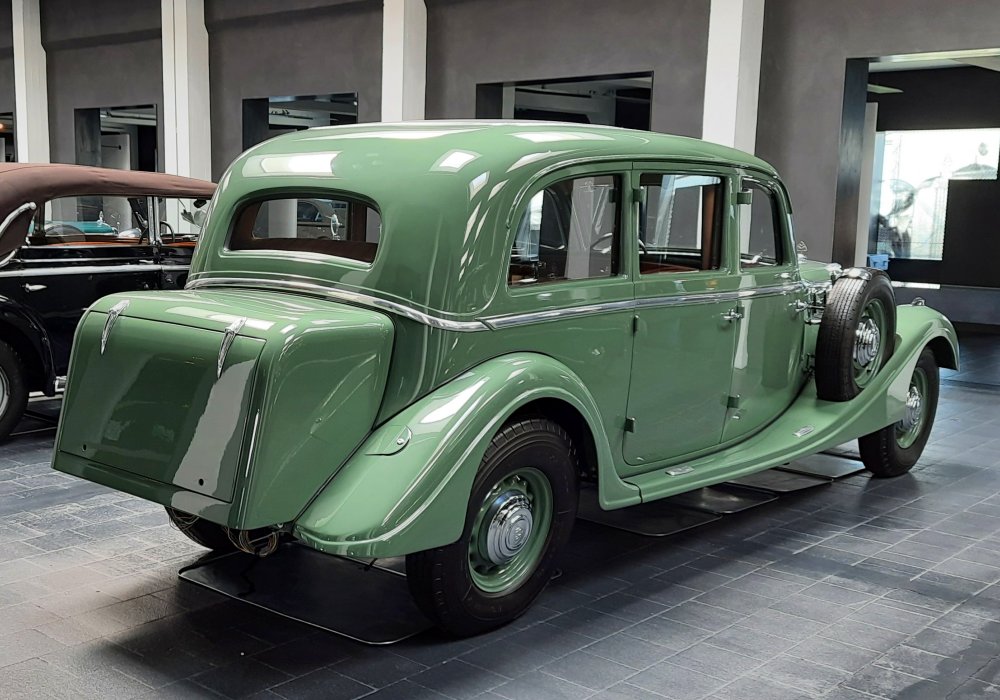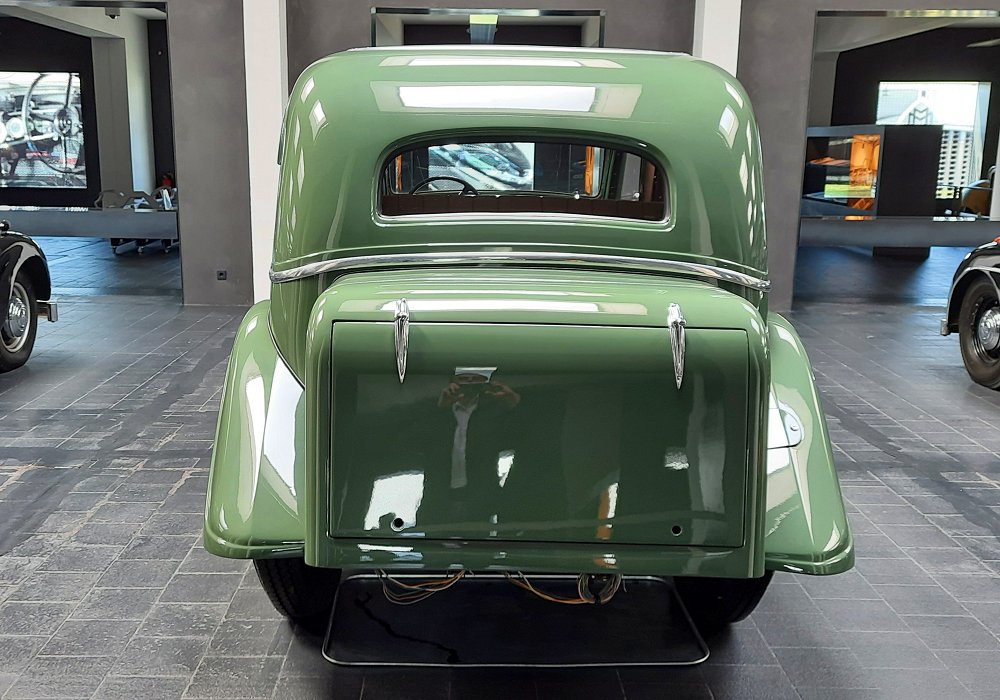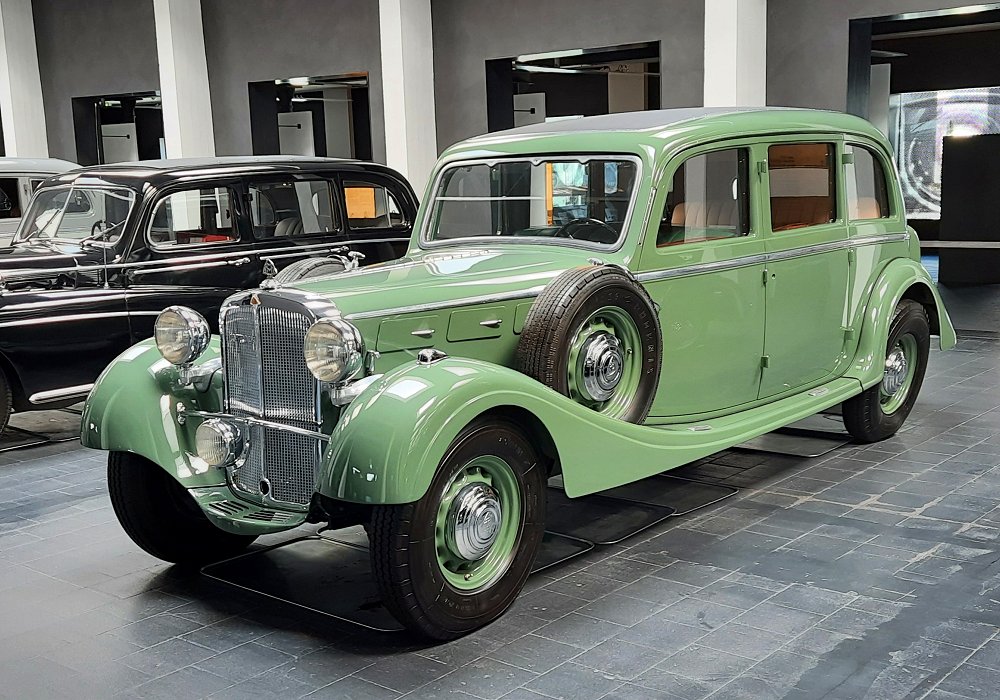Description
The Maybach SW 38 Pullman-Limousine by Spohn was one of the grandest and most imposing luxury automobiles of the late 1930s — a flagship of German prestige motoring and a masterpiece of custom coachbuilding. Built on the advanced SW 38 chassis, it combined Maybach’s most sophisticated mechanical engineering with the stately presence and craftsmanship of Spohn, Maybach’s preferred coachbuilder. The result was an exceptionally refined, chauffeur-oriented limousine designed for heads of industry, high-ranking officials and the wealthiest private clients of the era.
The SW 38, introduced in 1936 as the successor to the SW 35, represented the second stage of Maybach’s independent-suspension luxury series. It used a larger and more powerful 3.8-litre straight-six engine, still equipped with a clutch-operated Roots-type supercharger. In supercharged form, the engine produced approximately 150–160 horsepower, an impressive output for the period and more than sufficient to propel a large Pullman-bodied limousine with quiet authority. The engine was smooth, flexible and capable of sustaining high cruising speeds, reflecting Maybach’s background in high-precision aero-engine design. Its refinement placed it on par with — and often above — the best offerings from Horch, Mercedes-Benz and Rolls-Royce.
The SW 38 chassis was a technical achievement in its own right. It employed Maybach’s Schwingachse (swing-axle) independent rear suspension, combined with an independent front suspension system, giving the car a level of ride comfort and stability far beyond that of the big rigid-axle luxury cars still common in Europe at the time. The long wheelbase of the Pullman variant maximised cabin space and smoothed the ride even further. The chassis used a strong box-section frame designed to carry the heaviest and most elaborate coachwork, ensuring the limousine remained stable and composed even at high touring speeds.
Transmission was handled by Maybach’s sophisticated semi-automatic preselector gearbox paired with a torque-multiplying converter. This system allowed seamless, clutch-free shifting in most situations and contributed significantly to the SW 38’s effortless, stately character. For chauffeur-driven service, this smoothness was particularly valuable, allowing the car to glide through city traffic or accelerate onto open roads without disturbing the passengers.
The Pullman-Limousine body crafted by Spohn represented the pinnacle of pre-war German coachbuilding. Spohn’s designs emphasised majesty, proportion and meticulous craftsmanship. The SW 38 Pullman-Limousine featured a long, formal roofline, an extended rear cabin, wide rear doors, upright side glass and carefully sculpted fenders that flowed gracefully into the rear body. The car’s visual presence was considerable — tall, dignified and authoritative, yet balanced by Spohn’s restrained elegance. Many examples featured a formal division window behind the driver, allowing complete separation of the chauffeur’s compartment from the passengers.
Inside, the Pullman-Limousine embodied the highest standards of 1930s luxury. The rear cabin was the true focal point, designed as a private, rolling salon. Deep armchairs or a full-width rear bench were upholstered in fine leather or tailored cloth, depending on the owner’s preference. The interior was trimmed with exotic hardwood veneers, polished metal fittings, thick carpeting, vanity sets, fold-out tables, storage compartments and smoking accessories. Options often included reading lamps, intercom systems, heater units, and bespoke cabinetry. The craftsmanship throughout was of the very highest level, executed entirely by hand at Spohn’s Ravensburg workshops.
On the road, the SW 38 Pullman-Limousine delivered the serene performance expected of a car in this class. The combination of the supercharged straight-six engine, preselector gearbox and long-wheelbase independent suspension produced a quiet, smooth and unhurried ride. Steering was slow but very stable, ideal for a chauffeur keeping his passengers comfortable. The car’s ability to maintain steady speeds over long distances was praised during its era, and its mechanical refinement rivalled any European luxury car of the period.
Production numbers were extremely low. These cars were bespoke commissions, each built to order for extraordinarily wealthy clients, and their high price placed them in the rarefied company of Horch 853s, Mercedes-Benz 770s and Rolls-Royce Phantom models. As a result, surviving examples today are exceptionally rare and highly prized by collectors and museums.
The Maybach SW 38 Pullman-Limousine by Spohn stands today as one of the most magnificent pre-war German luxury automobiles. It represents the apex of Maybach’s technical prowess, Spohn’s coachbuilding artistry and the era’s ideals of formal motoring grandeur. Stately, refined and exquisitely built, it remains one of the most impressive vehicles ever to bear the Maybach name.





